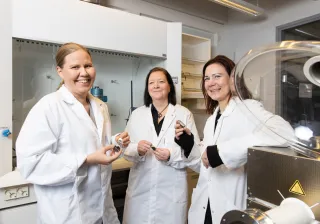Digitalization of water services is crucial for improving efficiency, sustainability, and reliability in water management. By integrating digital technologies, water utilities can monitor water quality in real-time, optimize distribution systems, and reduce wastage. Additionally, digital solutions enable better communication with consumers and promoting water conservation. With increasing water challenges impaired by climate change affecting freshwater sources and water quality, smart water management is a very relevant emerging subject, but not yet widely applied compared to, for instance, other infrastructure segment such as power and mobility.
In the context of smart water management, VTT analyzed around ~25,000 patents, seeking out high growth signals in technological development for the water sector. Based on the signals we identified in the documents we could generate seven distinguished relevant themes for increased safety, improved maintenance and resources sufficiency (notably detection and prevention of leaks) Together, these categories underscore a comprehensive approach to improving water management, safety, efficiency, and sustainability through technological advancements. While each category plays a unique role in advancing sustainable water management most of the also indicate the strong emergence of smarter systems in the water sector.
Weak signals are difficult to identify reliably
Early detection of trends and shifts, faces obstacles like cognitive biases and unsystematic methods. Weak signals are subtle, early indicators of potential changes, but are difficult to reliably identify. Moreover, signal detection is often slowed by dependence on experts due to challenges in identifying suitable expertise, constraints on experts’ availability, and high costs associated with their services. The manual nature of qualitative signal detection is further hampered by limited analysis scalability.
By combining frontier data processing techniques with strategic incorporation of expert knowledge VTT was able to efficiently process extensive data while incorporating expert input at key junctures to deliver useful insights for better foresight. The framework can help planners and experts monitor budding science and technology trends. The process quantitatively analyzes signals for prevalence and growth based on two dimensions: intensity and diffusion. The result is a hierarchy of signals experiencing high growth in both intensity and diffusion.
- Nascent signals are likely unknown or unexpected, but their high growth suggests they are important to monitor.
- Concentrated signals experience focused attention but may not be widely known, though they are on the rise.
- Pervasive signals are well-known but do not experience focused attention, though they are on the rise.
- Dominant signals are likely to be well-known and centered on, but their high growth suggests they remain important to monitor.
The water sector foresees intelligent structures
The majority of signals detected in the technology data relate to Intelligent Systems, Sensory Technology, and Structural Elements. Dominant signals center on Intelligence, Safety, and Structural Elements, reflecting mature integration focused on efficiency, protocols, and robustness. Meanwhile, Nascent signals showcase emerging innovations heavily in Intelligent Systems and Sensors, indicating early interest in technology for intelligence and efficiency. Additionally, some signals are relevant across multiple categories, as visualized in the network chart. Particularly strong connections are seen between Intelligent Systems and Sensor Technology, as well as Intelligent Systems and Structural Elements.
Overall, the distribution and emphasis of these signals across various categories highlight a progressive evolution from nascent explorations of technology to focused and widespread integration, culminating in dominant practices that prioritize intelligent systems, safety, and structural integrity. This evolution signifies a strategic shift towards leveraging technological advancements to address key challenges and enhance the resilience and efficiency of water networks.







